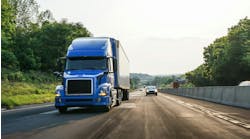We are in a time of major vehicle technology disruption. From drivetrain electrification to automation/autonomous vehicles to mobility, it seems there are almost too many developments to keep up with.
For the first time in a long time, we are seeing new vehicle manufacturers coming into the trucking industry with electric or hydrogen fuel-cell-powered vehicles. Speaking at a recent NationaLease meeting, Ken Davis, founder of Greentree Advisors LLC, said that by 2030, 25% of the global vehicle market will be electric. The transition of the commercial vehicle market to electric will start with buses and Class 4 to 6 vehicles.
Proponents of these vehicles say they will cost 30% less to operate than current trucks powered by internal combustion engines. However, there are concerns in the market about grid capability and charging infrastructure development. Demand for electric vehicles is being driven by both subsidies and regulations. Davis reminded audience members that when they are considering a move to electric vehicles, they need to factor in all the costs including that of the vehicle, the infrastructure and the cost of operation.
Davis also spent some time explaining the levels of autonomous driving:
Level 1 — Automation of one or more specific control functions (stability control)
Level 2 — Automation of at least two specific control functions (adaptive cruise and lane centering)
Level 3 — Limited self-driving automation (traffic creep function)
Level 4 — Full self-driving where the vehicle is designed to provide all safety-critical driving functions.
The value proposition for autonomous vehicles, according to proponents, is improved safety and reduced costs. Cameras, radar and LIDAR will be combined for vehicle dynamics. Software will control the vehicles with V2V and V2I connections. Regulation will be the key to increased adoption and LIDAR technology will advance vehicle capabilities.
Mobility is about access and is playing a larger role in how people and goods are moved. One of the drivers of mobility is urbanization. Today 50% of people live in urban areas; by 2040 that number will jump to 60%. There also has been a move from ownership to shared (Uber, Airbnb, etc.) and the growth of service on demand.
Mobility providers are asset managers, Davis explained. Services are digital and on-demand. Mobility services are replacing vehicle ownership, financing, insurance, maintenance, storage and parking. Mobility providers are usually vehicle agnostic. With mobility, availability is critical.
All of these technologies are seeing leaps and bounds developments almost daily it seems. It is important to keep up-to-date as things change in order to be in a position to take advantage of any opportunities they present.



